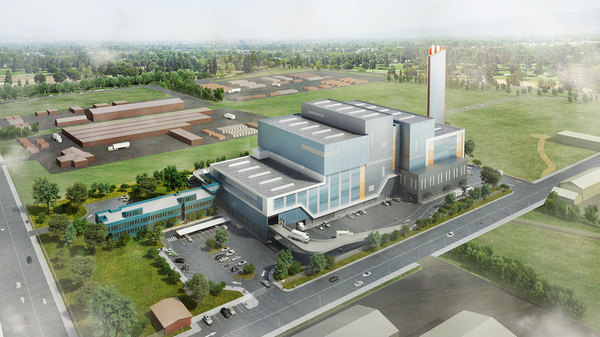Geelong could become home to an incinerator turning rubbish into electricity, which a local MP says might solve the city’s recycling crisis.
Council had been investigating a combined waste-to-energy plant with Ballarat and Wyndham for a year now, Mayor Bruce Harwood said.
“A waste-to-energy facility would be an economic driver and create local employment, so we’d be very keen to see any future plant built within our region,” he said.
“If not within our region, we would certainly want it close by to minimise our transport costs.”
A municipal partnership would create the scale required to make waste-to-energy viable for a private operator, he said.
Cr Harwood raised the concept with Victorian Energy Minister Lily D’Ambrosio last week, he said.
“These facilities have huge potential but are not cheap and would need funding from the State Government,” he said.
A nearly $700 million waste-to-energy facility is under construction in Perth, while Environment Protection Authority Victoria is assessing an application for a plant at Laverton North.
Australian Paper has approval for a $600 million waste-to-energy plant in Gippsland.
Cr Harwood said an incinerator could reduce Geelong’s reliance on landfill and produce “environmentally-positive” electricity with modern pollution-filtering technology.
The plant would not be a “substitute for recycling” and State Government still needed to invest in recovery facilities, sorting and a container deposit scheme, he said.
But Member for Western Victoria Bev McArthur said the plant was an “obvious solution” for Victoria’s recycling “emergency”.
“I cannot understand why Victoria, given both our energy and waste crises … would not be rushing to facilitate projects of this type.”
Geelong could burn the statewide backlog of unsorted recycling following the closure of processor SKM and China’s refusal to continue importing the waste, the Liberal MP said.
“Rather than burying our waste in the ground and exporting it to less developed nations, we could use it in a more efficient manner.”
Some materials could be recycled only a certain amount of times, Ms McArthur added.
More than $500 million “sitting” in State Government’s sustainability fund from taxing landfill could pay for a large plant to burn rubbish from Melbourne and Geelong manufacturing sites, she said.
Ms McArthur recently visited a Danish council-run incinerato that was turning a “considerable profit”, she said.
Ms D’Ambrosio said waste-to-energy technology had “a role to play” in avoiding landfill.







